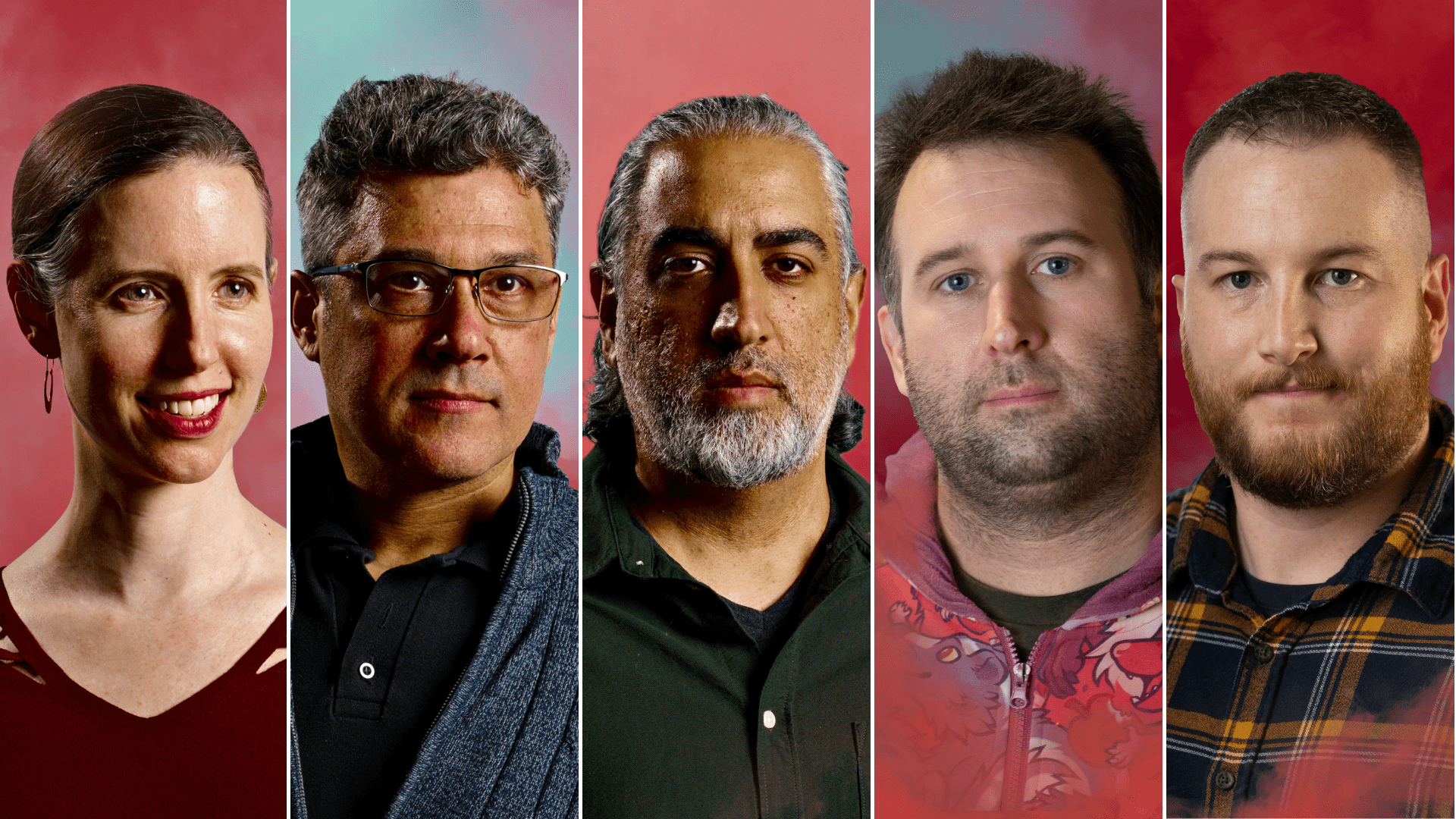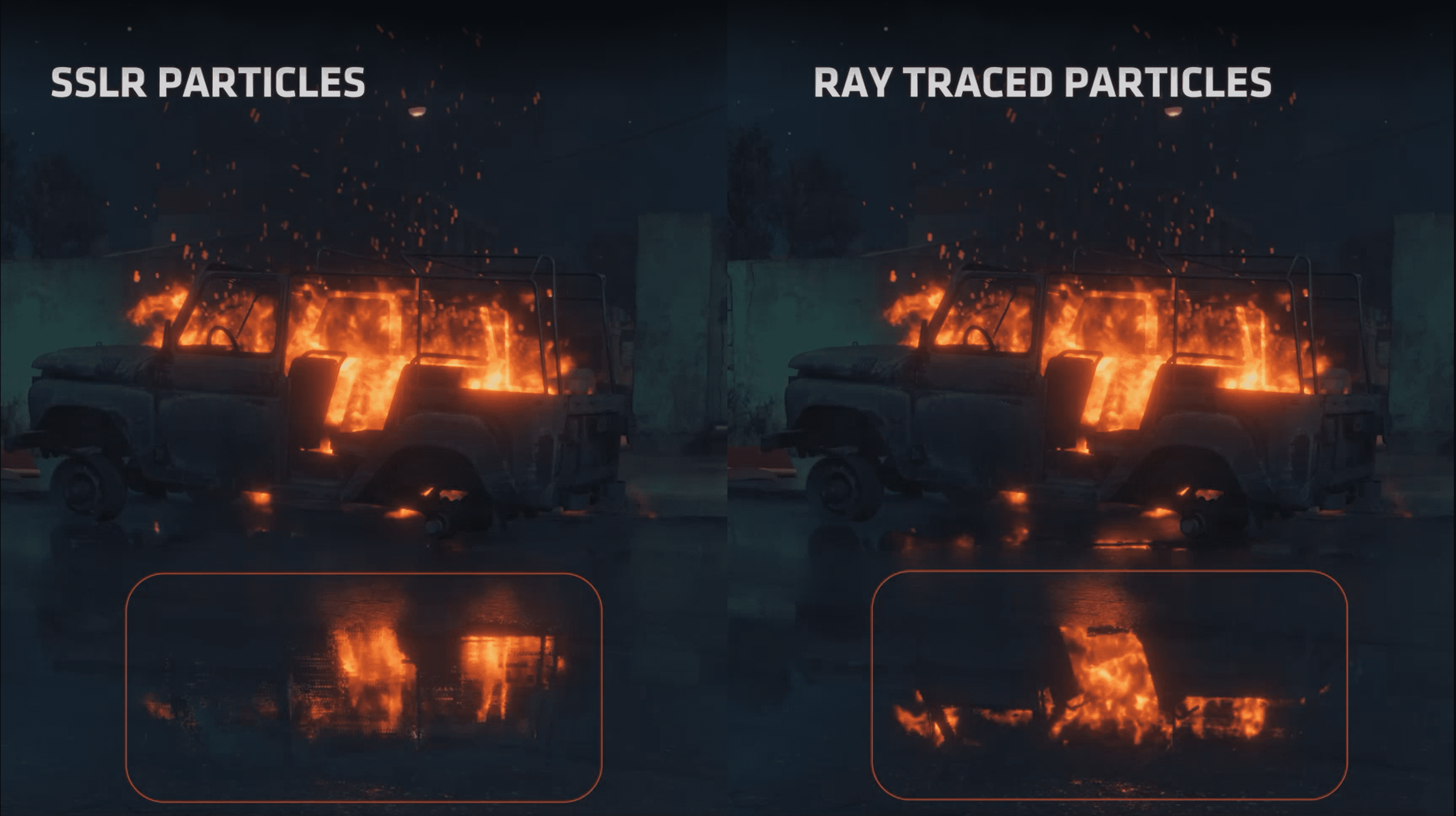We are proud to have five Ubisoft Toronto experts speaking at this year’s Game Developers Conference (GDC)! Over the course of three days, our speakers will be showcasing their teams’ achievements and sharing knowledge on a variety of topics from cutting-edge raytracing, to elevating unique personal voices in narratives, and how technical innovations transformed stealth mechanics in Far Cry 6 .
Check out each talk’s recap below or click to jump to a specific recap:
- Voices in the Machine: Making Space for Yourself in AAA by Narrative Director Navid Khavari
- Performant Reflective Beauty: Hybrid Raytracing with Far Cry 6 (Presented by AMD) by Team Lead Programmer Stephanie Brenham
- Simulating Tropical Weather in Far Cry 6 by Senior 3D Programmer Colin Weick and Technical Artist Emily Zhou (Ubisoft Montreal)
- A Good Guerilla is a Hidden Guerilla: Improving Stealth in Far Cry 6 by Lead Programmer Rich Welsh
- The Soundscapes of Yara: Audio Innovation and Representation in Far Cry 6 by Audio Director Eduardo Vaisman
Voices in the Machine: Making Space for Yourself in AAA
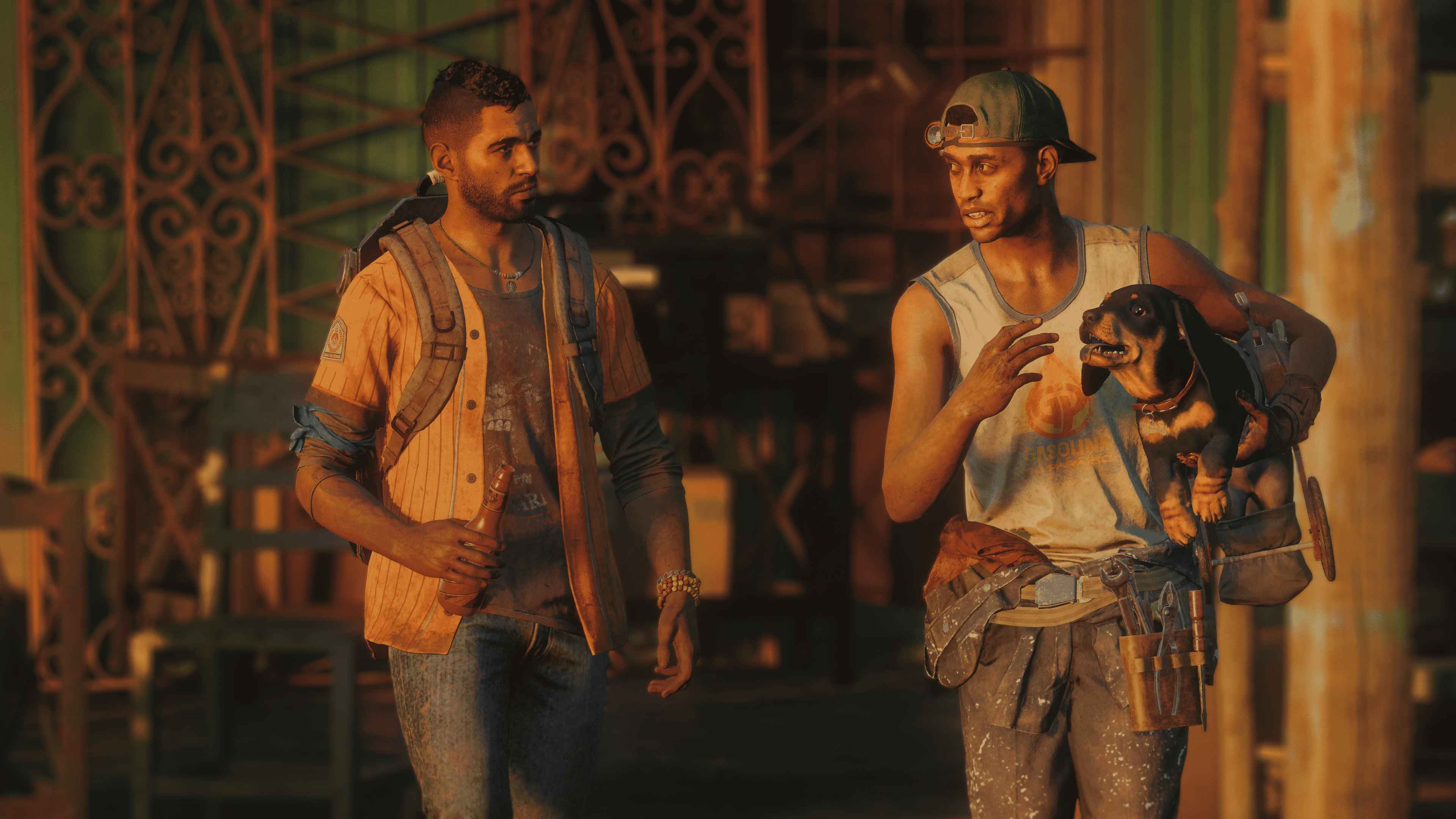
Behind Far Cry 6’s dynamic characters and immersive guerilla gameplay is a team whose unique perspectives and personal stories helped shape it. Navid Khavari, Narrative Director of Far Cry 6, explores how to elevate voices to build compelling game worlds at the Game Developers Conference.
At its best, a triple A studio is an inherently collaborative machine. – Navid Khavari
The “Cog in the Machine” Mindset
For developers, landing a job on an AAA game can be daunting. After moving to Ubisoft Toronto from a small indie studio, Navid was struck by the scale of the production. He found himself lost in the project and began to focus more on what was expected, rather than his own unique perspective.
Khavari calls this the Cog Mindset, and many new developers and creatives experience it. Some warning signs are thoughts like:
- I am lucky to be here
- I’m just one person
- I don’t know where to start
It’s important for all creators to hold onto their individuality, and allow their emotion and experiences to shape their work. Personal voices are pivotal for creating authentic game worlds, and were key in bringing Far Cry 6 to life.
Move past the shine of AAA, past a place of fear and reactivity, and remember why you’re there. – Khavari
Personal Connections
To connect with a project, Khavari says to think about what engages you and what areas you can empathize with. When designing the narrative of Far Cry 6, he began by mapping out the game’s key themes. Many of these ideas are universal and finding areas that you relate to can open the door to renewed inspiration.
A revolution is not won by the fearless. It’s won by the feared. – Clara Garcia
🤔 Did you know: This iconic quote was inspired by @Navface’s family’s story of fleeing the Iranian Revolution.
👉 Learn more in our #GDC22 recap: https://t.co/tePfRnXTXx pic.twitter.com/ftsyoYpNBe
— Ubisoft Toronto (@UbisoftToronto) March 23, 2022
Reflecting on the theme of the immigrant experience in Far Cry 6, Khavari tapped into his family history. He explains how his parents were forced to flee their home during the Iranian revolution, only to find themselves starting life from scratch. Survival is paramount, but it comes with a cost. These feelings of self-preservation and displacement shaped Dani Rojas, and the decision to remain in Yara and fight as a guerilla.
Team Voices
To create a meaningful narrative with authentic characters, the team knew that they had to look beyond their individual voices. Khavari shared some ways that collaboration and ongoing conversation helped ensure accurate representation.
In the example of Paolo De La Vega, a transgender Libertad guerilla, Navid emphasized that a lot of care was taken to ensure that the LGBTQ2S+ representation in Far Cry 6 did justice to the people and issue reflected in-game.
To ensure accurate LGBTQ2S+ representation and avoid tokenizing characters in #FarCry6, the team sought out various perspectives.
Our LGBTQ2S+ ERG & actor Xavier Lopez were valued consultants during the process of creating Paolo De La Vega’s character.
👉https://t.co/tePfRnXTXx pic.twitter.com/8ITAeUKMFn
— Ubisoft Toronto (@UbisoftToronto) March 23, 2022
Actors Manuel Rodriguez, who played Philly Barzaga, and Carlos Diaz, a dialect coach and writer on the project, also saw their roles expanded to consultants on the production. The duo played a critical role in ensuring accurate representation of Latino-Caribbean culture and adding authenticity to the characters of Far Cry 6.
Research and Exploration
To allow players to experience a realistic guerilla fantasy, research and exploration were essential. Examining the game’s themes like revolution connected the team with experts from various disciplines. This includes Dr. Ana Lopez, Professor of Cuban and Caribbean Studies at Tulane University, Carmen Marin, Latinx Media Consultant, and Tanya Depass, Founder of I Need Diverse Games. Their insight was crucial for expanding on the team’s voices and realizing their visions.
“There’s no real end to research and learning.”
Navid’s journey creating Far Cry 6 emphasized that personal connections and unique perspectives are pivotal for designing authentic game worlds. The life and emotion behind Yara stem from that of a huge team. To create a truly immersive experience for players, every voice counts.
Performant Reflective Beauty: Hybrid Raytracing with Far Cry 6 (Presented by AMD)
From the soft shadows cast by Yara’s lush vegetation to the colourful buildings of Esperanza reflected in the gleaming chrome of vintage cars, the world of Far Cry 6 is filled with rich, realistic detail thanks to the magic of raytracing.
“Raytracing was key in creating a realistic, immersive world for our PC players,” said Team Lead Programmer Stephanie Brenham. The interplay of light, shadow and reflections merges art and tech to bring Yara to life.
Shedding light on the raytracing process
In her GDC talk, Stephanie outlines the process of implementing hybrid raytraced reflections in Far Cry 6.
The team began by generating rays that will be used for all their different types of reflection traces. Next, an SSLR pass was done to determine where high-precision hardware accelerated raytracing was necessary. In the next pass, hardware accelerated raytacing and lighting took place followed by particle ray traces. Finally, in the last pass the team integrated the results from all the different types of reflections.
Overcoming obstacles
Stephanie also walked the audience through some technical challenges the team faced and the techniques they used to overcome each hurdle.
For example, not every glossy surface required a reflection with a high-level of detail accuracy. The team had to create a way to determine the level of precision required for their screen space reflections — a technique for reusing screen space data to calculate reflections.
Not all reflections are created equally! The team developed a way to determine the level of precision required:
🟥= smoother materials, a high-precision trace required
🟩= less smooth, a faster, performative trace usedCatch the full #GDC22 recap ➡ https://t.co/tePfRnXTXx pic.twitter.com/MsXhzdN3W7
— Ubisoft Toronto (@UbisoftToronto) March 23, 2022
For materials with high smoothness like puddles or chrome, a high-precision trace is required for mirror-like reflections. But reflective surfaces that weren’t as smooth could get away with a more performative trace.
Distance also plays a part in determining the type of raytracing used. For objects further from the player, reflections are computed with screen space traces exclusively. But for reflections closer to the player, much of what is reflected is offscreen; hence, the team used hardware raytracing for close distance reflections.
Reflecting particles
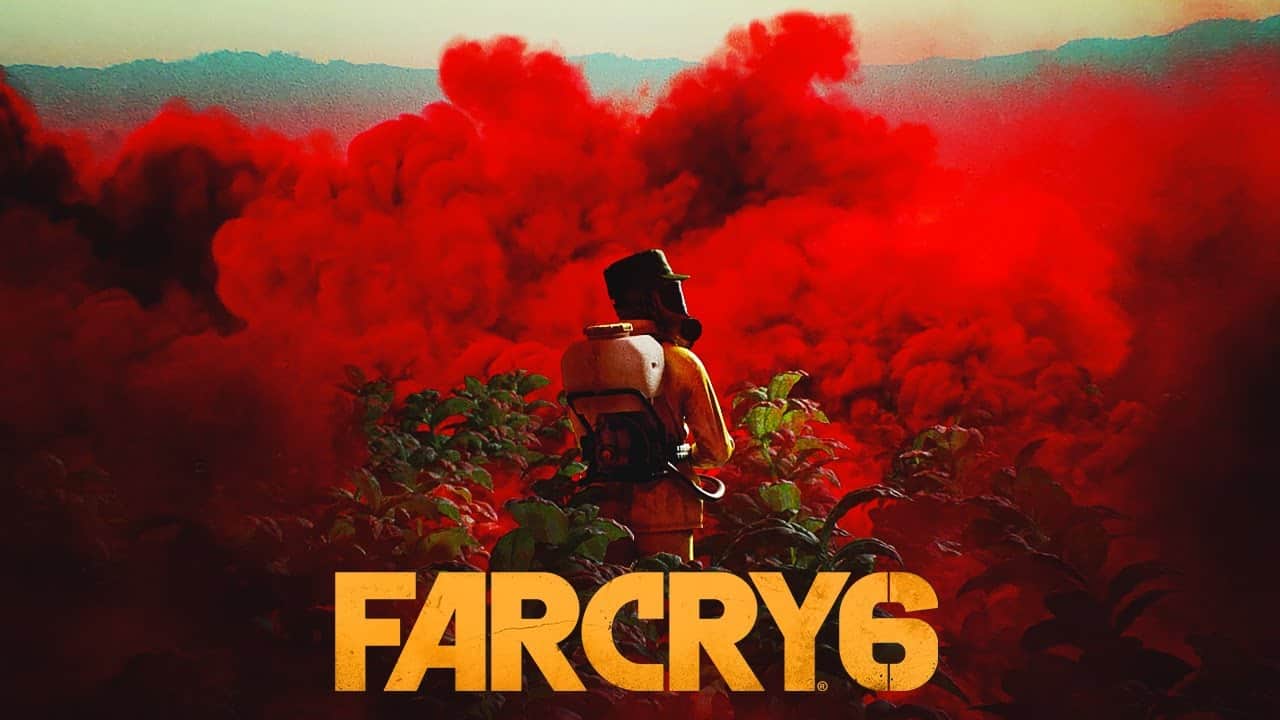
Far Cry is known for its dynamic explosions and fire, and in Far Cry 6, the game introduces a new form of explosion and spread — poison.
The distinctive red particles of Viviro, a chemical weapon of Anton Castillo’s regime, features prominently in reflections in-game.
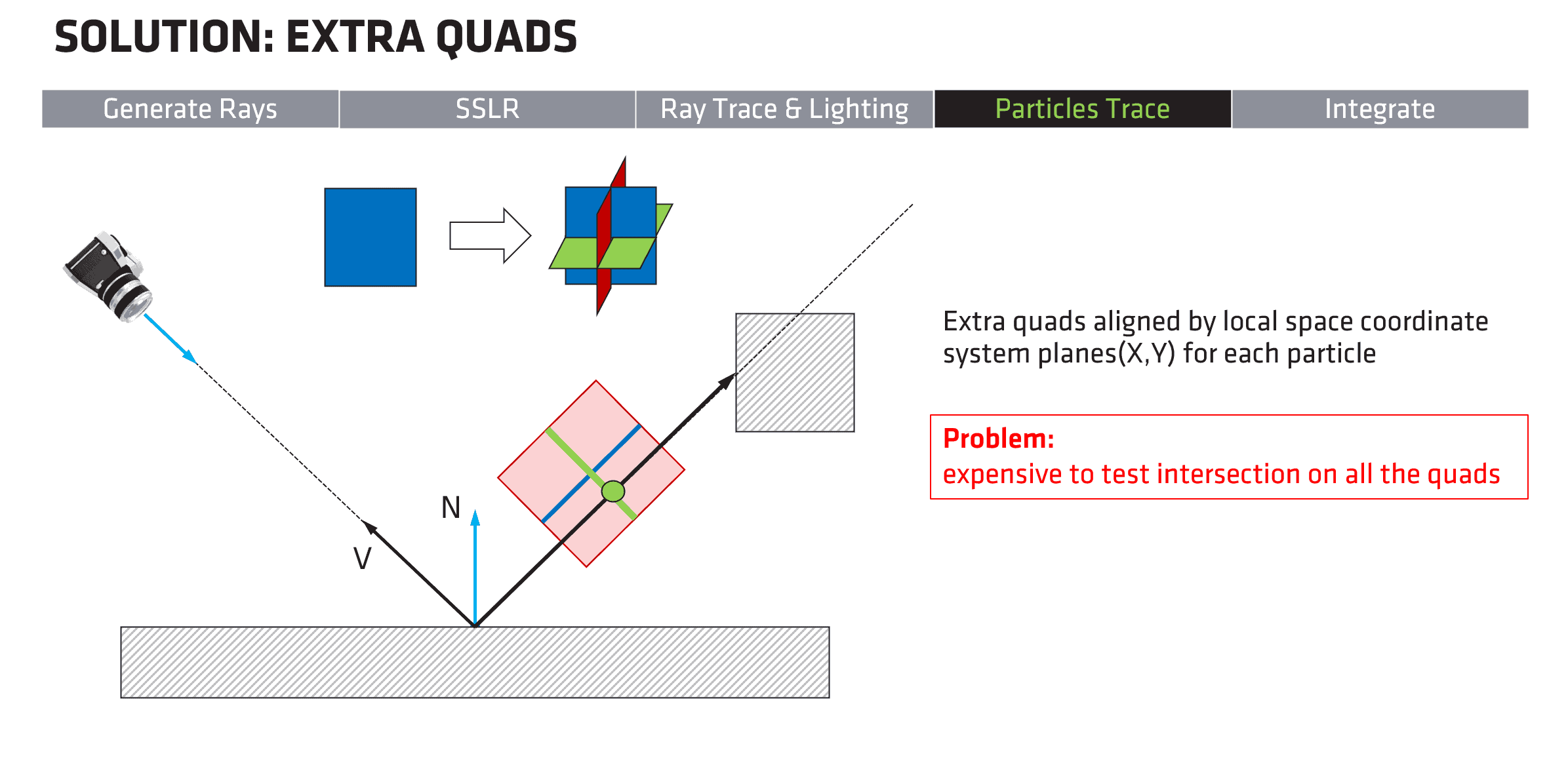
However, in creating these reflections, the team was met with a sequence of problems. Firstly, unlike other reflected objects, particles were 2D boards. To trace their reflection, the team collected particles along a ray and blended them. But at times, the rays traced may not intersect with all the particle boards. To solve this, the team built extra planes or quads aligned with the particle’s X,Y coordinates and optimized the process by masking specific quads.
These hardware raytraced reflections were an expensive and intensive process but the results speak for themselves.
Putting it all together
Time’s up! The area underneath the truck is unnaturally bright, and the building’s reflection is partially invisible. @StephsTangents shares how raytracing was used to create the realistic and immersive world of Yara at #GDC22! Catch the full recap 👉 https://t.co/tePfRnXTXx pic.twitter.com/8fkQrQFy0h
— Ubisoft Toronto (@UbisoftToronto) March 23, 2022
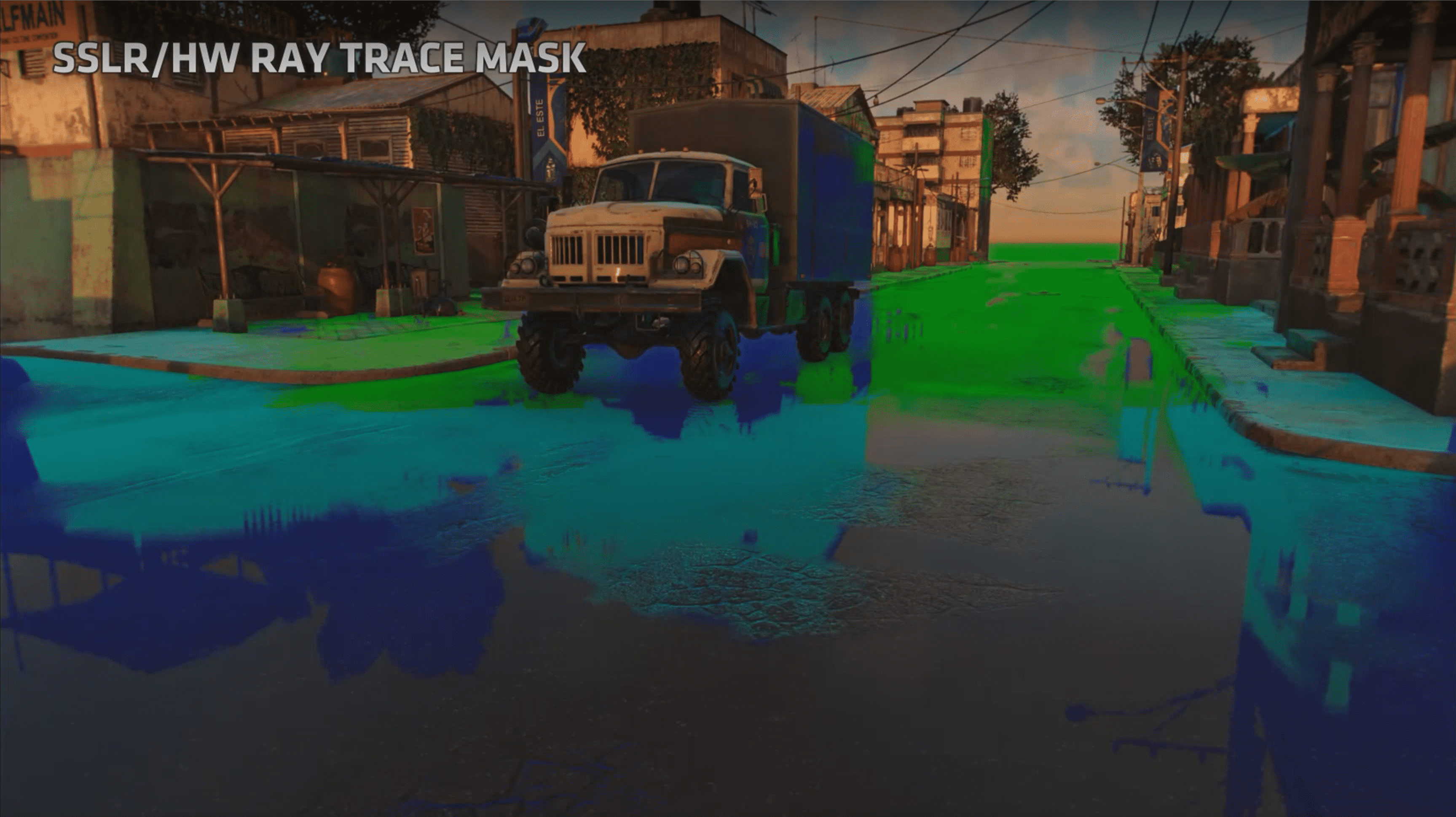
Here’s the same image with a mask mapping screen space reflections (green), hyrbid reflections (cyan) and hardware raytraced reflections (blue). The latter fills in many of the missing details.

And here’s what it looks like when you put it all together. “A picture of performant reflective beauty,” Stephanie said.
Simulating Tropical Weather in Far Cry 6
☀️ or ⛈️, Yara’s weather is a sight to behold!
Go behind the scenes with @colinwackl & learn the techniques and systems used to create #FarCry6’s weather states.Catch our full #GDC22 recap 👉 https://t.co/tePfRnGiyX pic.twitter.com/5yZG6Zeg8X
— Ubisoft Toronto (@UbisoftToronto) March 24, 2022
Sun-soaked islands that transition into wind-whipped thunderstorms, which clear to reveal stunning sunsets, Yara’s weather is a sight to behold.
But while the fictional tropical paradise’s climate can seem unpredictable, the dynamic weather systems behind it certainly aren’t. Senior 3D Producer Colin Weick was joined by Emily Zhou, Technical Artist at Ubisoft Montreal, to outline the techniques and systems used to simulate arbitrary weather states in a continuous day-night cycle.
Core controls
❓Did you know: The weather manager makes up the core code for the weather systems in #FarCry6 and its data is what drives the game’s weather transitions.
👀 the images for data conditions behind each of these weather states.
Learn more ➡ https://t.co/tePfRnGiyX #GDC22 pic.twitter.com/OL3iix2uIk
— Ubisoft Toronto (@UbisoftToronto) March 24, 2022
Values are assigned to set weather presets and can be dialed up or down to create various weather patterns from light, wispy clouds, to dark, heavy fog, and intense, flashing thunderstorms.
Location, location, location
Yara is a vibrant island with distinct regions, each with its own micro-climate. Whether it’s the dry terrain of the west, the damp central wetlands, or the lush and humid jungles of the east, the team ensured the climate changes accordingly to provide a realistic experience.
“We wanted to create a beautiful, enjoyable exploration experience for the player and provide a convincing escape into our game’s fantasy,” Emily said.
🌦 True Yarans know that the landscape, and therefore the weather, changes as you traverse the island.
🔄 To create realistic microclimates, the team formatted a looping 5-day forecast for each region with weather presets for each hour.
😍Where in Yara has the best views?#GDC22 pic.twitter.com/1NwY8N37ct
— Ubisoft Toronto (@UbisoftToronto) March 24, 2022
This system allowed the team to showcase their weather presets in the locations and times where they looked best!
However, the system also had to allow for overrides during gameplay missions and pre-rendered cutscenes. Co-op play is also available in Far Cry 6 and during this, the weather had to be replicated for all players.
To do so, the team created a weather state flow process.
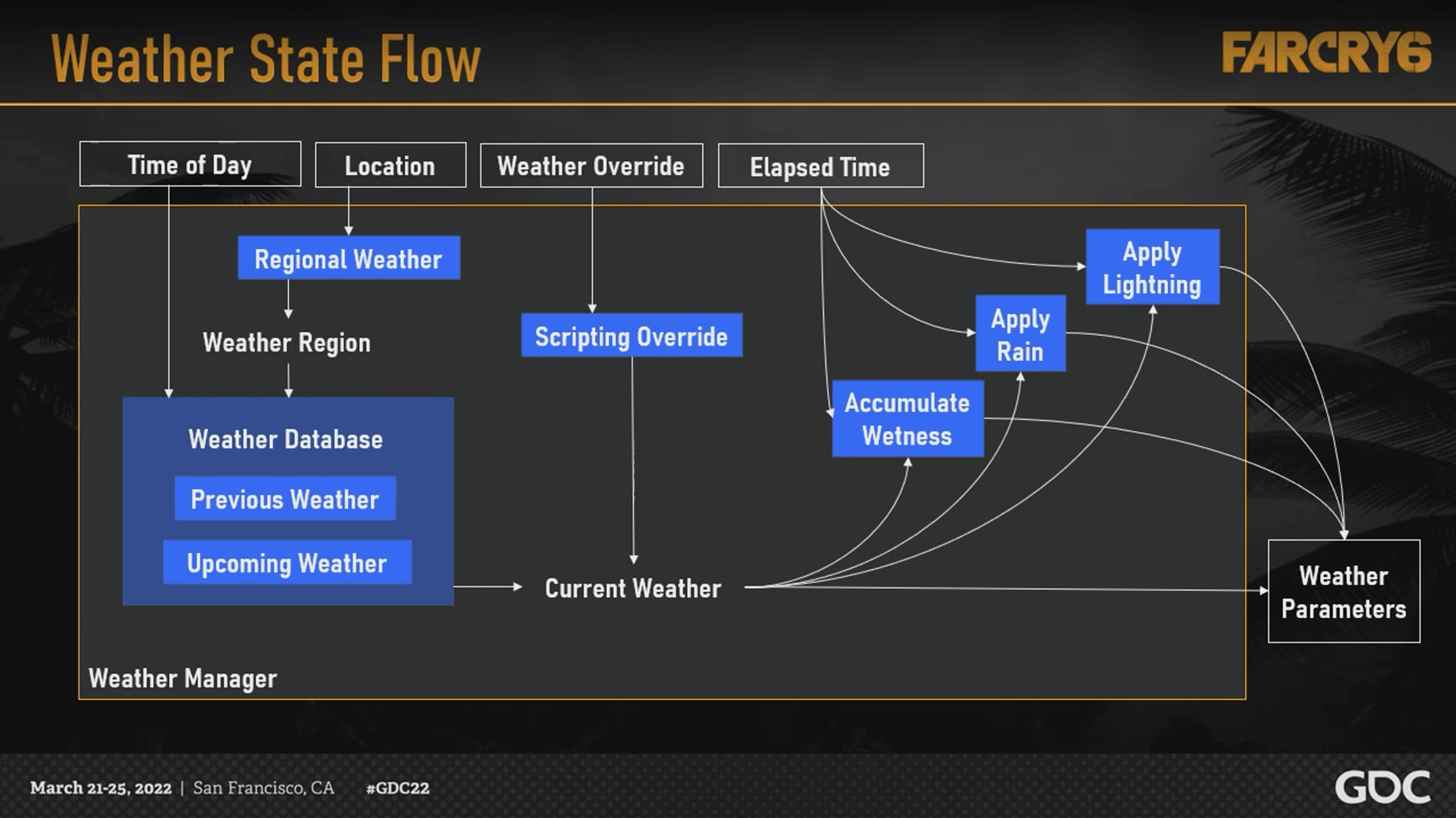
Overriding the weather
The system first consults the forecast to get the weather preset at the current time of day. Based on where the player is, regional adjustments are applied. This provides the current weather state which can be overridden for gameplay. Finally, it updates the weather state with wetness, rain and lightning levels over elapsed time and outputs the final parameters.
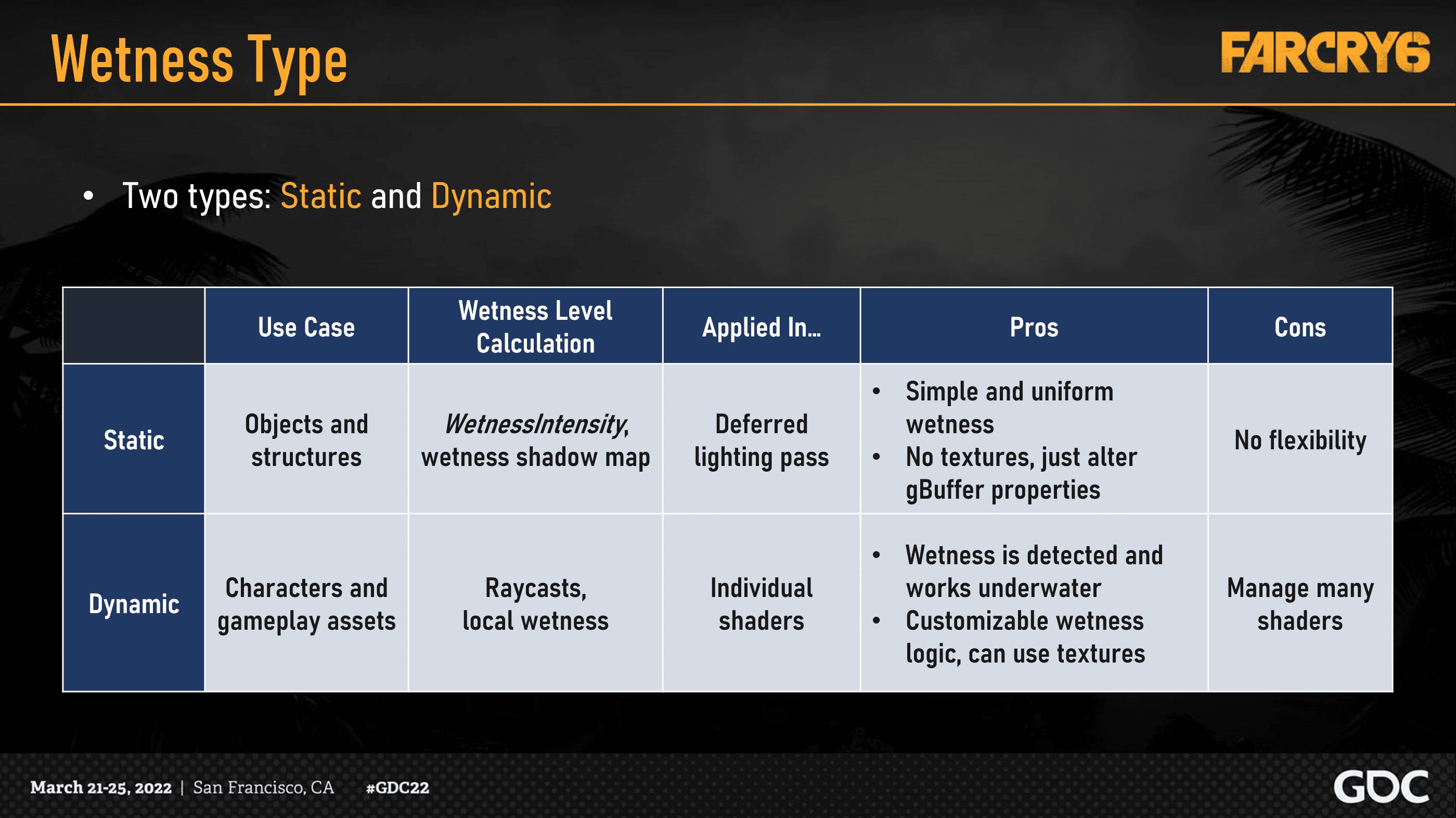
Imitating wetness
As a tropical island, one can expect regular downpours and even heavy thunderstorms in Yara.
A goal of the development team was to ensure natural transitions in weather patterns, which meant that when a storm clears, it’d leave water droplets and puddles in its wake.
However, creating a “wet state” for every asset in the game was an unrealistic resource drain. The team worked in parallel with asset creation to create an “out of the box” solution. This meant that majority of the assets in game could be dragged and dropped into the world and it would react to wetness by default. It was implemented in two forms — static wetness and dynamic wetness.
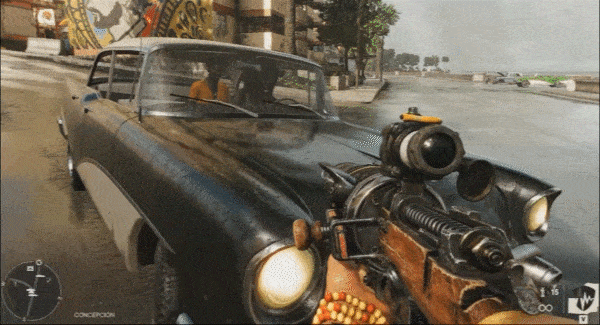
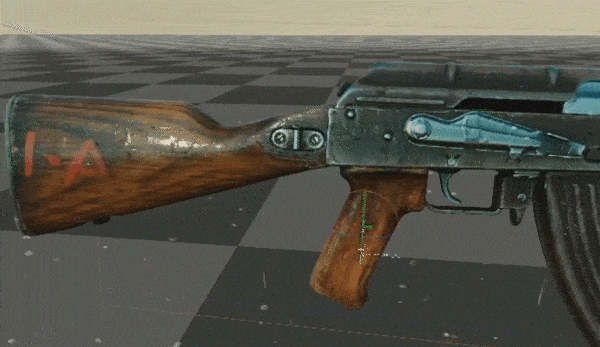
Static wetness was applied to objects that do not move. A rain shadow map was used to map out if an object was occluded by something (eg: a balcony, roof, etc) and apply wetness to exposed areas.
Dynamic wetness was reserved for objects that move around in the game. Raycasts were used to detect if the asset was exposed to rain. When it starts to rain, dynamic assets will increase in wetness level slowly until they are fully wet, and will dry slowly when no longer exposed to rain.
For weapons and vehicles, which are seen up close in first-person perspective, animated rain effects were applied using animated textures. To add a layer of realism, these effects were applied in two parts: streaks and droplets, and were applied on vertical and horizontal surfaces respectively.
Colin and Emily also shed some light on obstacles they had to overcome during the development process:

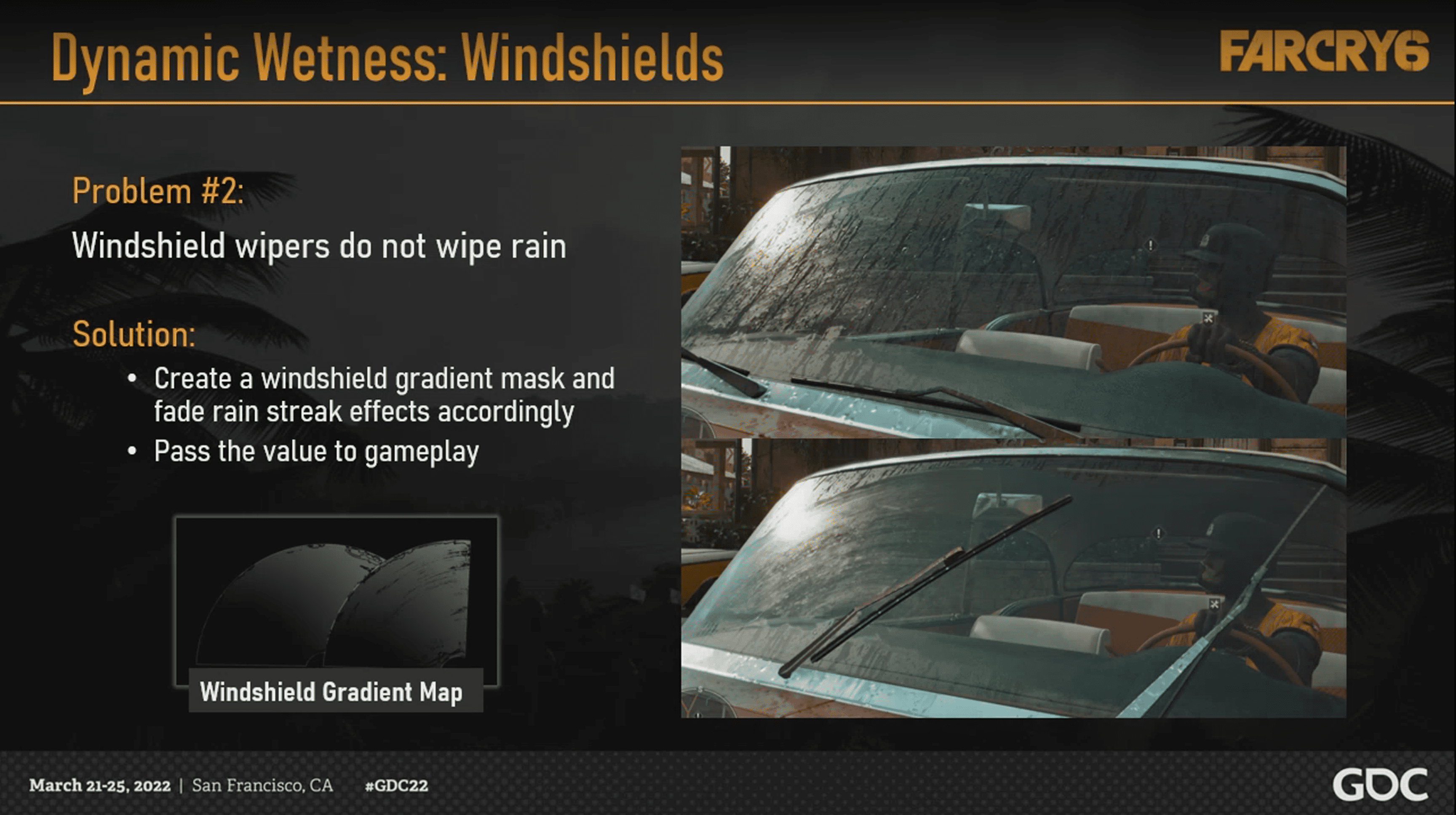
Rendering Features
The presentation was capped off with the technical implementation of various weather types, from rain and lightning to volumetric clouds and fog. Colin and Emily walked the audience through the light scattering and raymarching techniques used to create Yara’s misty jungles and stunning sunsets.
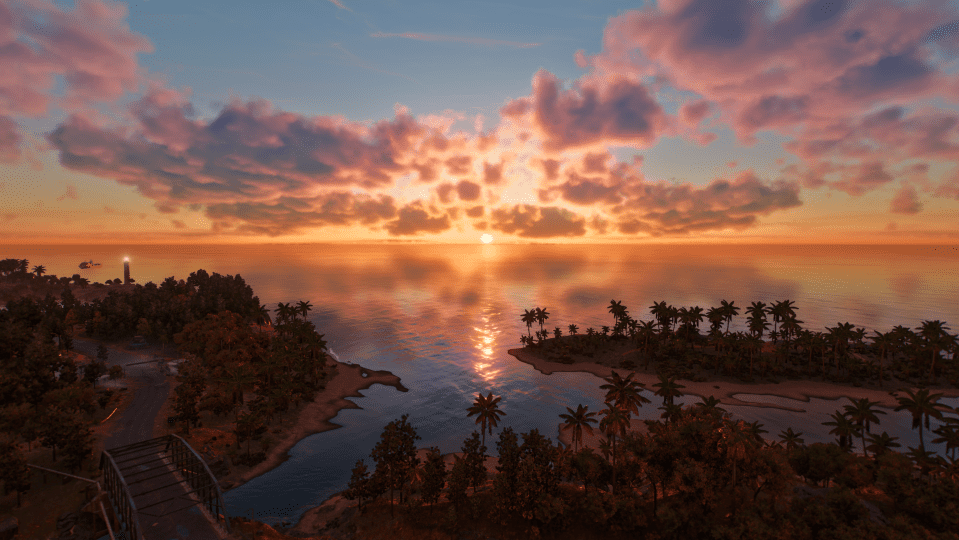
Ever stopped for a moment to admire the weather while in Yara? Share your virtual photography snaps with us on social!
A Good Guerilla is a Hidden Guerilla: Improving Stealth in Far Cry 6
The Far Cry games are known for vast, volatile worlds where the very environment players explore actively fights back. To survive the wild landscapes of Yara and Anton’s deadly forces, a more calculated lifestyle is key.
Rich Welsh, Lead Programmer at Ubisoft Toronto, dives into how the Far Cry 6 teams enhanced stealth mechanics to create an authentic guerilla experience for players at the Game Developers Conference.
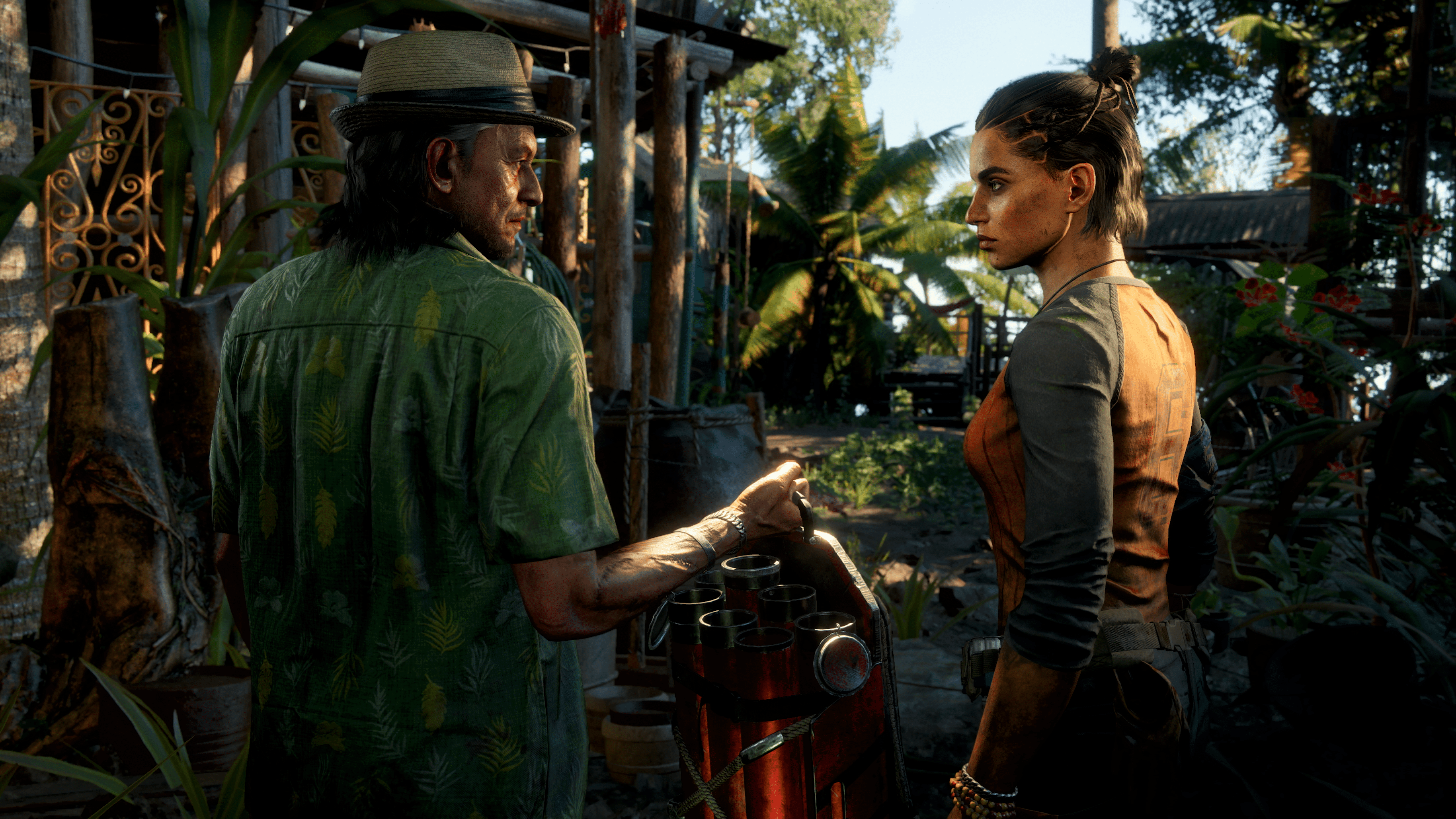
The Guerilla Lifestyle
As an underground, freedom fighting guerilla, stealth is a key weapon. Far Cry 6’s narrative presented an opportunity to kick stealth mechanics up a notch, but it was important to the team to stay true to the Far Cry series.
“We wanted to improve stealth gameplay for the guerrilla experience while not compromising what Far Cry is at its core: an action game.”
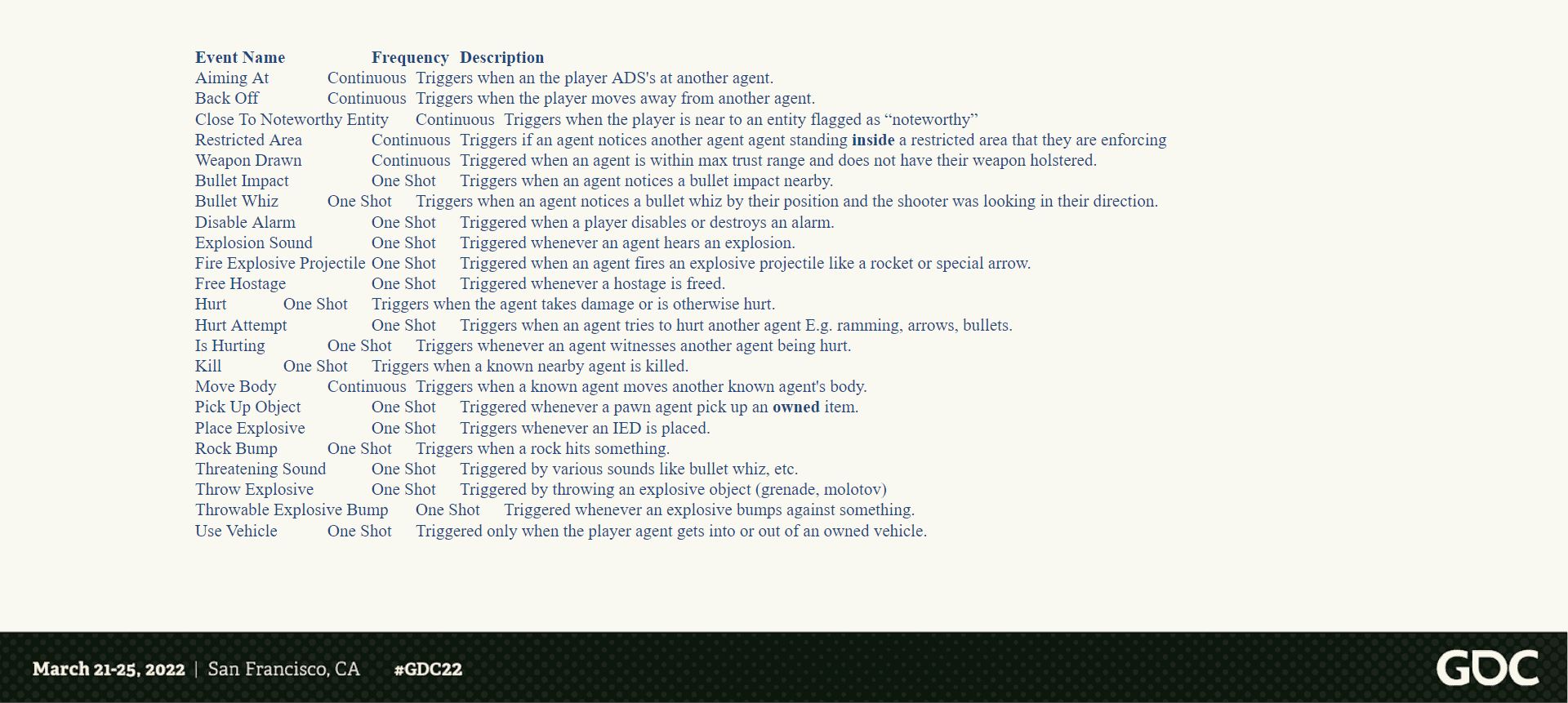
Hiding in Plain Sight
Unlike previous Far Cry games, when outside of combat or restricted areas, Dani is not seen as an immediate threat unless she provokes military personnel first. While Anton’s forces will attack on sight if spotted in a restricted zone, players can explore the rest of the world freely – so long as you keep your weapon holstered. New trust rules were incorporated to trigger suspicion when causing chaos, from freeing hostages to aiming weapons at NPCs.
“One of our largest leaps from the Far Cry series was this – giving the player the ability to traverse Yara at their own pace.”
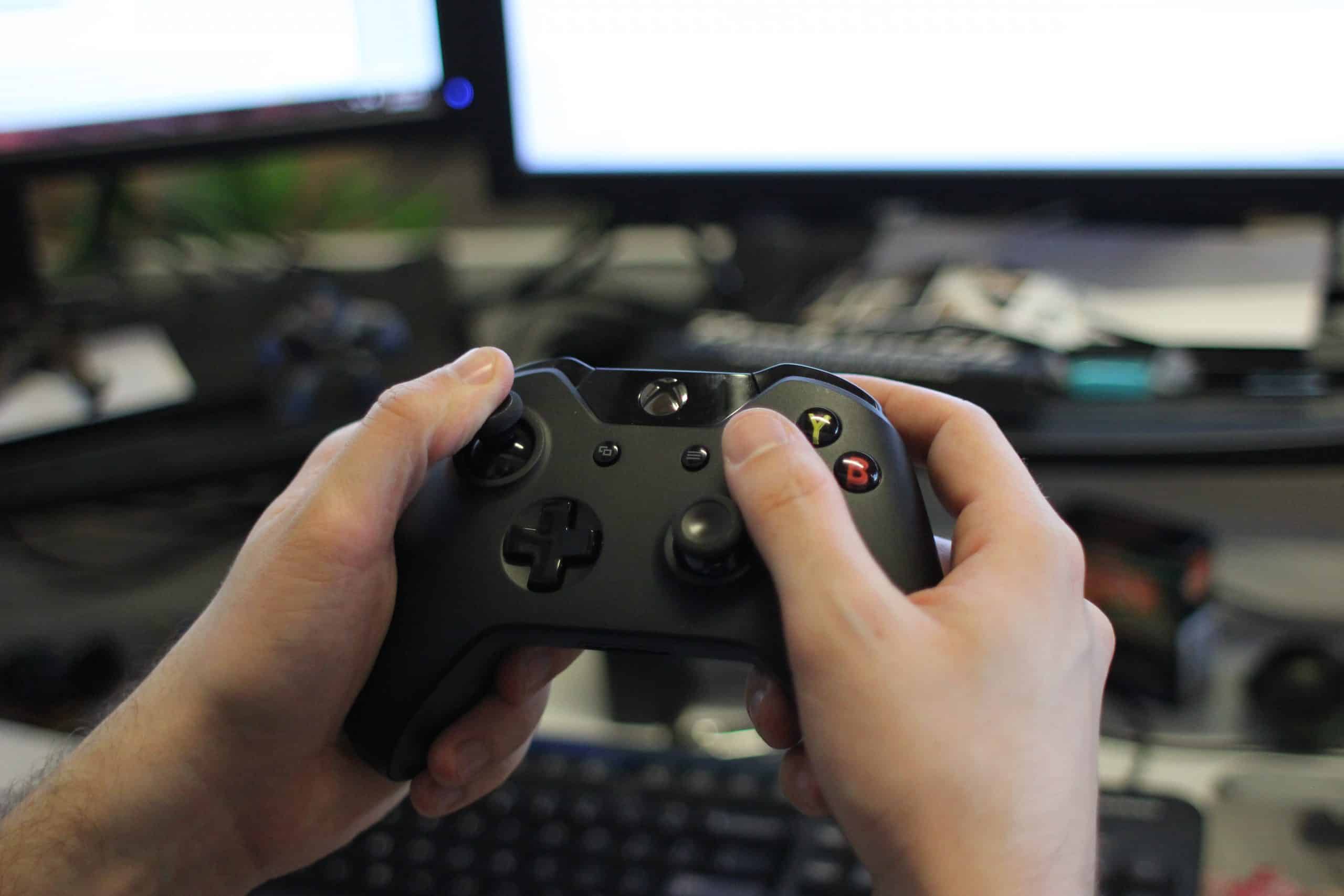
Player Feedback to Refine Stealth
To tackle the challenge of enhancing stealth, teams conducted continuous research, testing, and gathered player feedback with goals of keeping gameplay consistent and free of frustration. In the first test, players found stealth gameplay too difficult, triggering alarms and alerting NPCs unwillingly.
Inconsistent AI Detection
🔑 Playtests were key for kicking stealth up a notch in #FarCry6.
👁 They helped find areas of frustration, like NPCs ability to see and hear Dani from miles away.
💡 To fix, the team tuned down detection distances. Learn more in the #GDC22 recap: https://t.co/tePfRnXTXx pic.twitter.com/8DEnPN6dV5
— Ubisoft Toronto (@UbisoftToronto) March 24, 2022
NPCs were able to spot players across large distances and the sound from footsteps when walking, jumping and running travelled too far. This made stealth overly challenging, so the team tuned down detection distances.
System for Awareness
😱 Alerting a single NPC originally sent the entire outpost after players!
🛠 To make stealth slip-ups less punishing, this was tweaked to alert only nearby NPCs.
Learn more in our #GDC22 recap: https://t.co/tePfRnXTXx pic.twitter.com/wAbabZ9sXq
— Ubisoft Toronto (@UbisoftToronto) March 24, 2022
Takedowns
Takedowns 🤝 Stealth
NPCs were catching players in the moments before takedowns – cancelling stealth action! To fix, the team added one second to the ⏱️.
Learn more in the #GDC22 recap: https://t.co/tePfRnXTXx pic.twitter.com/hLTTMtcPaU
— Ubisoft Toronto (@UbisoftToronto) March 24, 2022
To prevent stealth actions being cancelled prematurely and allow players to take down targets freely, the team added one second to the detection window.
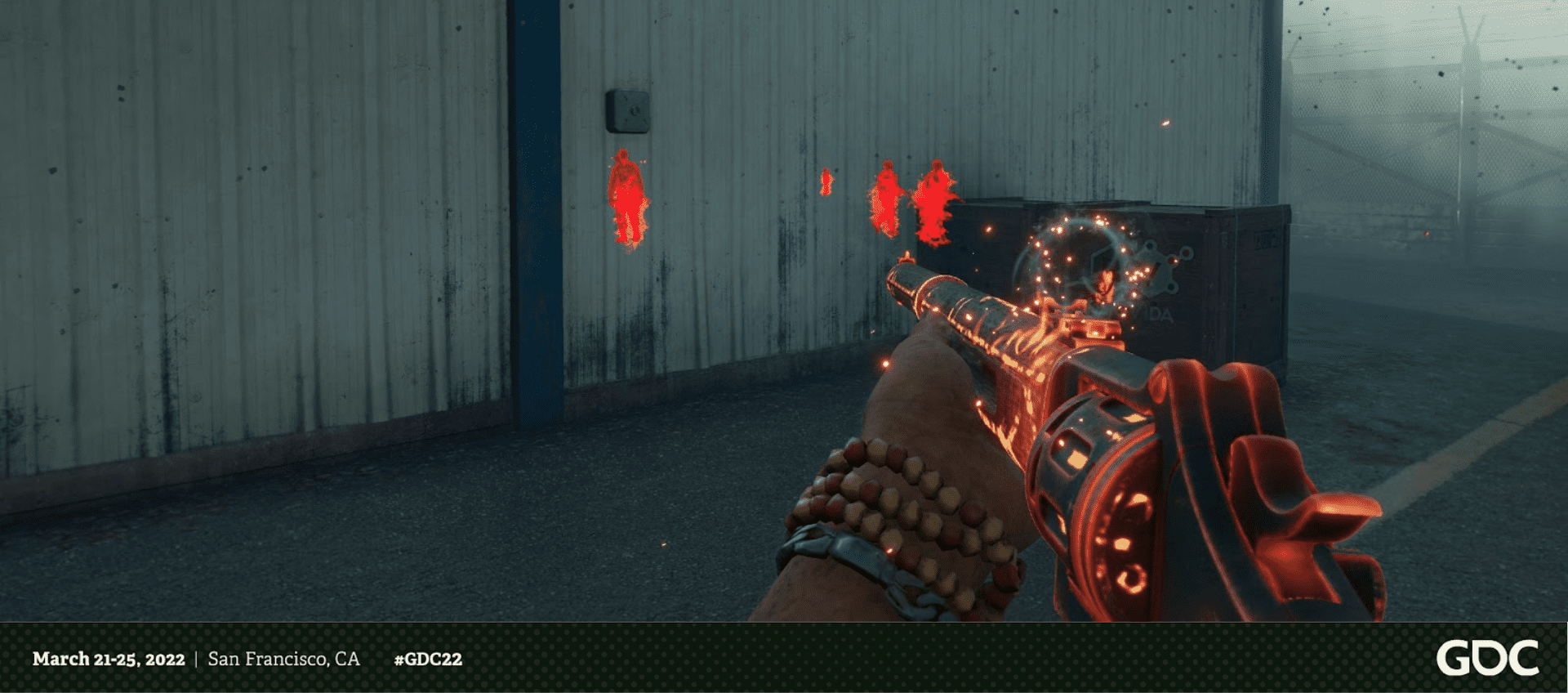
More tools and toys
The team incorporated new gadgets to help players stay under the radar, like the Triada gear set and La Varita Resolver weapon to attack NPCs through solid cover, and EMP weapons to secretly disable vehicles or alarms. They also introduced tactics to distract enemies, like manipulating automated guns and breaking alarms to send NPCs astray.
Sneaky Companions
Non-combat Amigos were introduced to accentuate the stealth experience. To keep NPCs’ eyes off the player while sneaking around, Chorizo and Boom Boom provide the ability to distract, tag enemies and resources, and collect loot.
The Soundscapes of Yara: Audio Innovation and Representation in Far Cry 6
From the catchy salsa rhythms of street musicians, to the rapid-fire rap of Maximas Matanzas and the pounding military anthems of Anton Castillo’s regime, the music and sounds of Far Cry 6 is a vital part in bringing Yara to life and expressing the region’s Latino-Caribbean culture.
“The part I wanted to highlight in this game was to bring the richer aspect of Latino culture, the music, the rhythm, the language, and their special cultural traits”, said Eduardo Vaisman, Audio Director of Far Cry 6.
In his talk, Audio Director Eduardo Vaisman shares insight on the technical innovation behind the game and how they draw on Latino culture, history and lived experiences to craft an authentic representation that supports the game’s narrative.
The singing reflex
When your favourite tune comes on the radio, it’s hard not to sing along, and Dani Rojas is no exception. When driving around Yara, players around the world were treated to Dani’s passionate (albeit slightly off-key) renditions of “Havana,” “Living La Vida Loca,” and more.
dani singing along with the radio in far cry 6 is an amazing little detail
more games need to do this pic.twitter.com/Stsy3tcafv
— TmarTn (@TmarTn) October 26, 2021
Have you caught Dani Rojas singing along to the car radio while playing #FarCry6? @Edvaisman explains why this detail was added at #GDC22:
🎤Make Dani more relatable
🌴Immerse the player in the Yaran fantasy
💃Reinforce Latino representationWhat’s your fave sing-along song?🎶 pic.twitter.com/l2htAltpWv
— Ubisoft Toronto (@UbisoftToronto) March 25, 2022
However, a series of preconditions must be met before we hear Dani’s tunes. For example, Dani begins singing when in the car or idle, out of combat and danger zones, and especially not when Dani is heading to a friend’s funeral or in the middle of killing someone.
It was almost human the way the singing actually happens. – Eduardo Vaisman
Fun fact: Eduaro’s favourite sing-along song from Far Cry 6 is La Vida Me Cambió, which translates to “life changed me”.
Diversity of voices
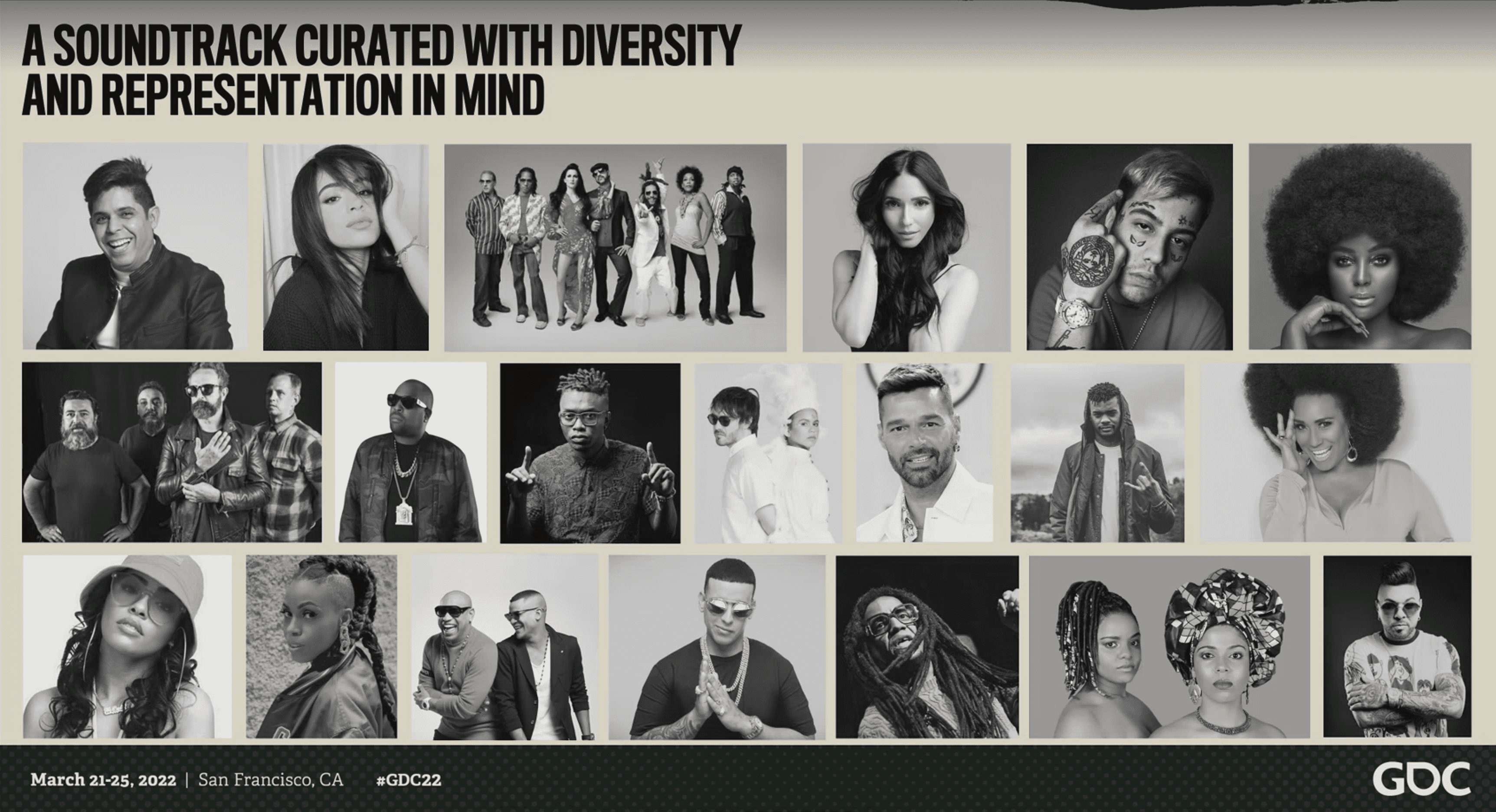
140 songs were featured in the Far Cry 6 soundtrack, featuring a good balance of female and male authors and performers with diverse music styles such as, salsa, timber, reggaeton, cumbia, hip top, trap, and more!
Here is where the diversity actually shines. – Eduardo Vaisman
Shoutout to @PedroBromfman, Hilario Duran, @Gabylonia, Ariel Contreras-Esquivel, and other composers and voice talent for bringing #FarCry6 to life with a diverse soundtrack 🌴
Did you know that 90 voice actors were cast, with most being native Latinos or 1st-gen immigrants? 🤔 pic.twitter.com/qp6J2PZN0i
— Ubisoft Toronto (@UbisoftToronto) March 25, 2022
The rainbow of Latino voices that are heard come from a variety of places, including Cuba, Dominican Republic, Puerto Rico, Mexico, Guatemala, Ecuador, El Salvador, Venezuela, Colombia, Peru.
Musicians of Yara
When on a Caribbean island, you’re almost guaranteed to find street musicians playing traditional songs anywhere and everywhere. Eduardo had the challenge of reflecting the spirit of Yara through a band of musicians, ensuring that the composed music drove the seamless animation and had to do so within the technical constraints of the game.
@Edvaisman reveals at #GDC22 that patterning, a special technique, was used to achieve the realistic sound and look of street musicians in #FarCry6 🎶
This feature was almost cut 4 times, but thankfully survived! Learn more in our full recap: https://t.co/tePfRnYrN5 pic.twitter.com/hqCHrywTsV
— Ubisoft Toronto (@UbisoftToronto) March 25, 2022
“Patterning is the process of dividing every instrument in every song in patterns that are less than 300 frames or 10 seconds long using animations that can be repeated or interleaved,” Vaisman explains. The patterns are based on rhythm and motion rather than on the notes themselves, so the Ubisoft Kyiv team had to motion capture each pattern individually after they were recorded and filmed simultaneously at the Ubisoft Toronto office.
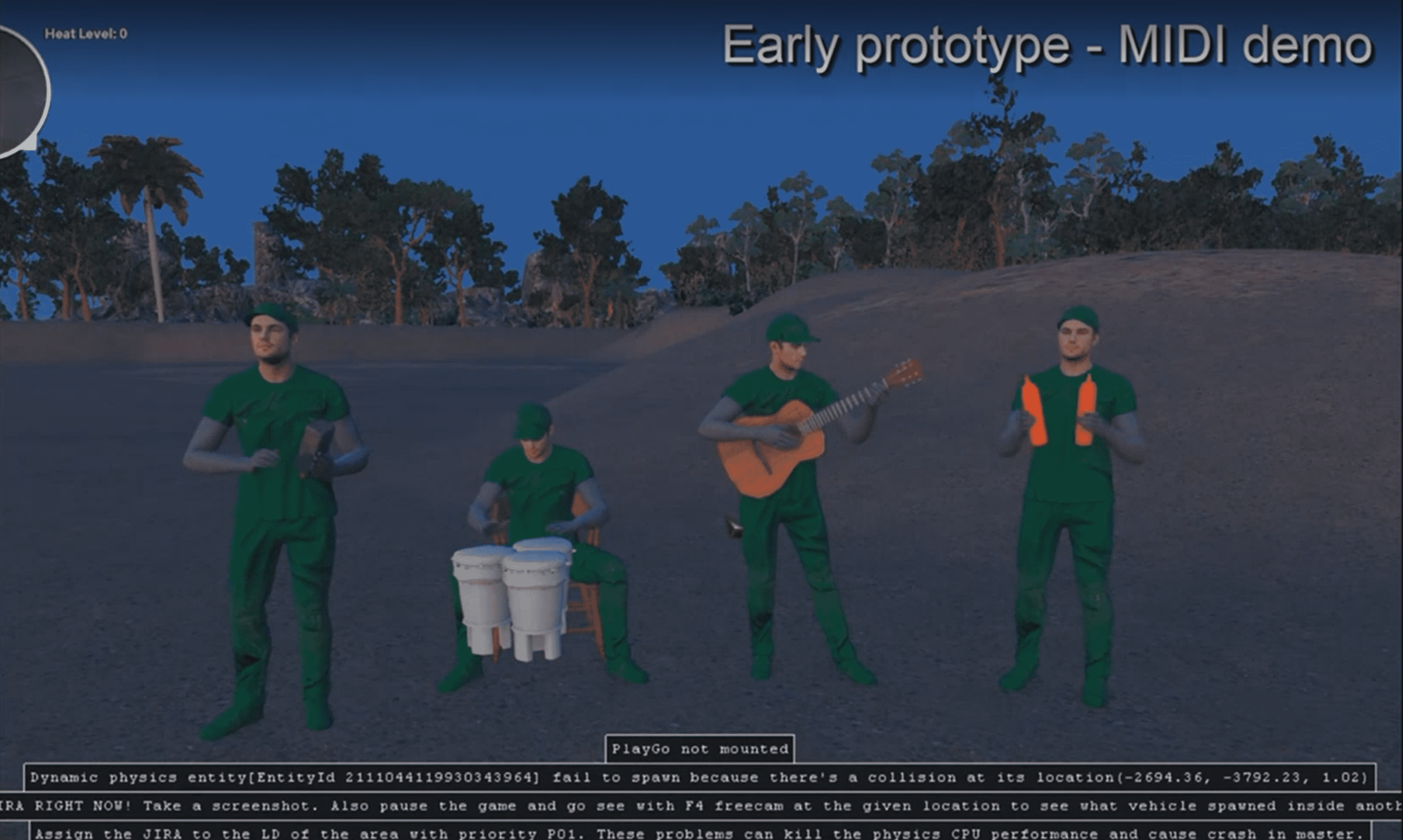
The evolution of street musicians in Far Cry 6 started with an early prototype MIDI demo where ketchup and mustard bottles were used in place of maracas. Patterning was done for each musician and each musical instrument: the double bass, congas, flute, etc.
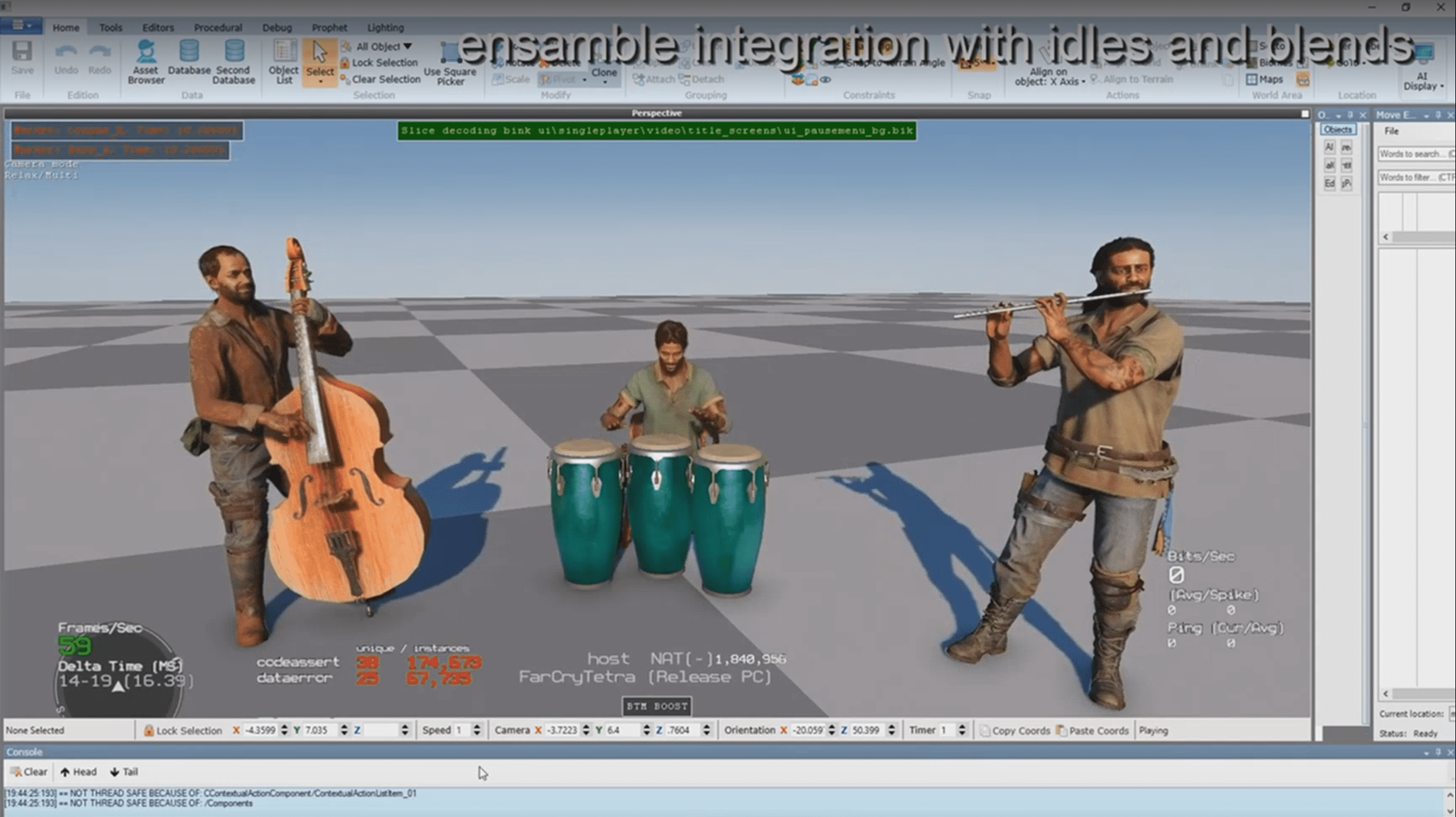
The magic happens when all the patterning is ensembled together, enhanced with blends and animations, and voila—a realistic portrayal of street musicians playing together as band, without drop frames or jump cuts!
Embracing Yara
The whole team embraced the idea of Yara being a living, breathing country. — Eduardo Vaisman
Although proper Latino representation was one of the main goals, Vaisman wanted the Yaran accent to be uniquely Yaran and not natively tied to any particular region (eg: Mexican, Colombian or Venezuelan).
Can’t put your finger on where the #FarCry6 Yaran accent came from? 🤔
That’s because our team worked with a dialect coach to create a new one, inspired by how Latinx speak English, and influenced by accents from Cuba, Dominican Republic, Puerto Rico and Panama 🗣 pic.twitter.com/dxOp0cRlb7
— Ubisoft Toronto (@UbisoftToronto) March 25, 2022
Thanks to the technical and creative innovation of our amazing audio teams, composers, soundtrack, and voice talent, the vibrant world of Yara was developed, a rich reflection of Latino-Caribbean culture. We highly recommend exploring Yara and hope that you appreciate all the little efforts that went into creating the soundscapes of this world!
